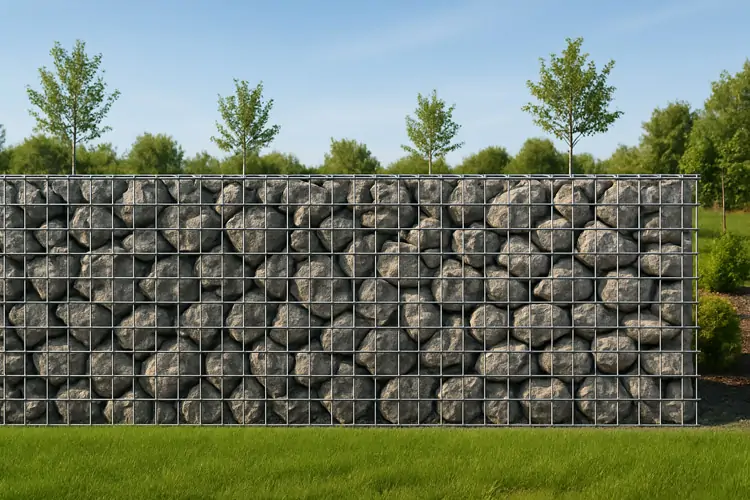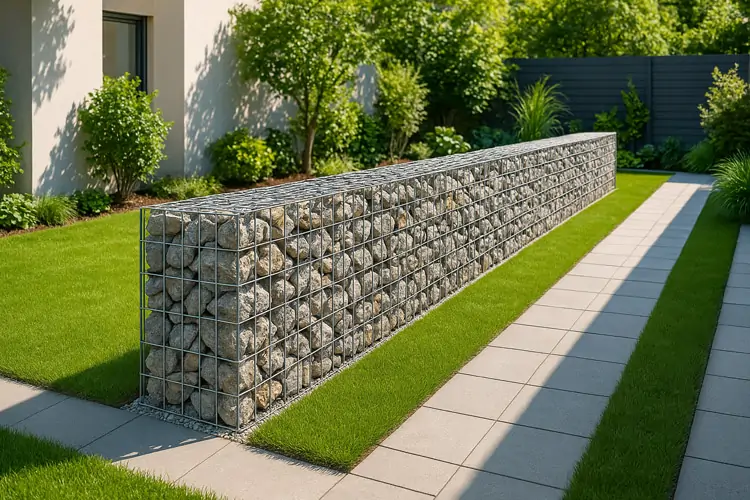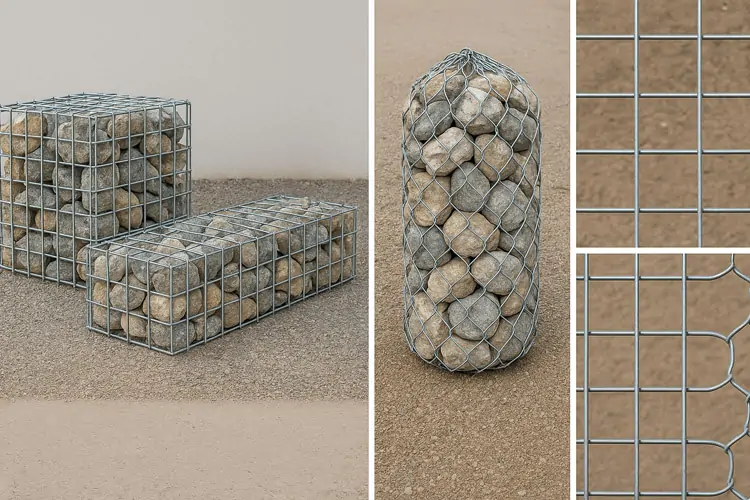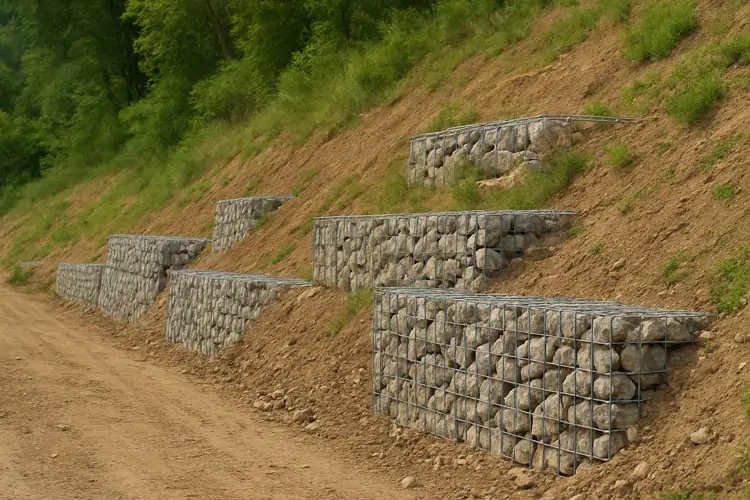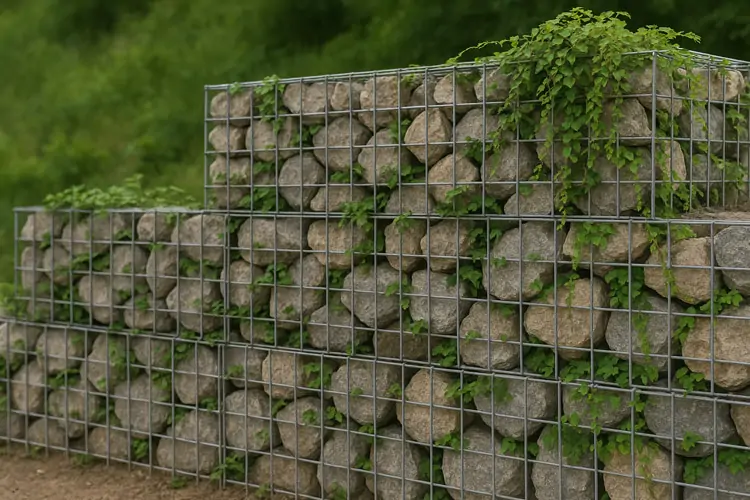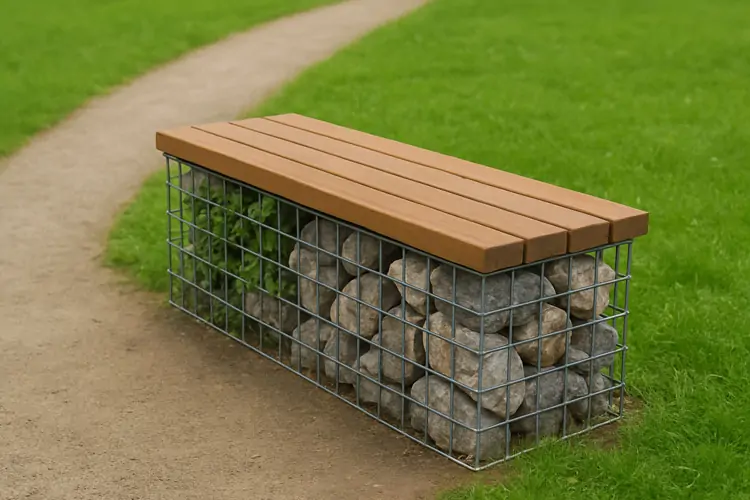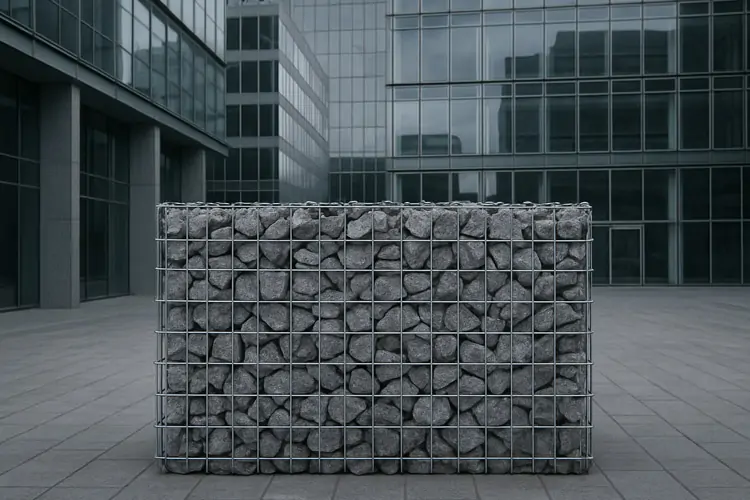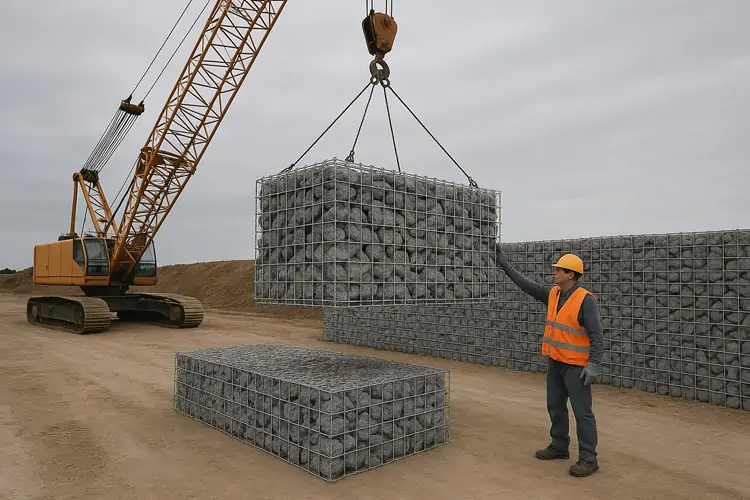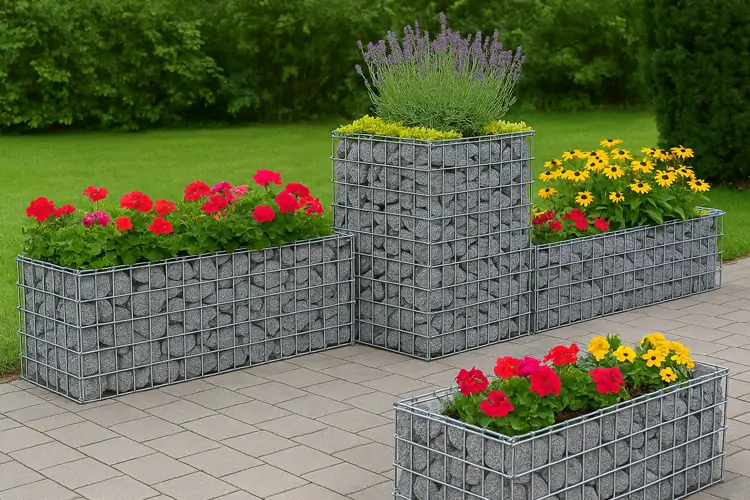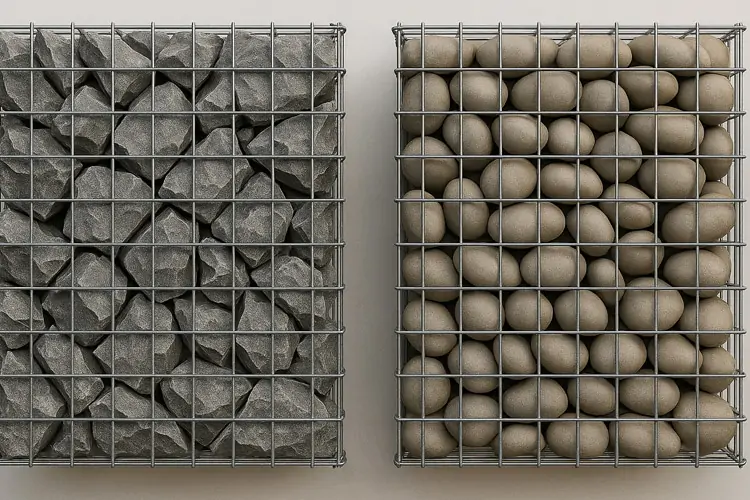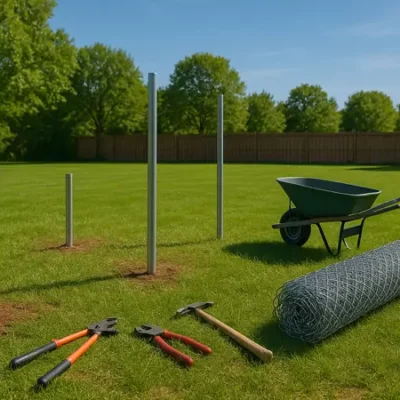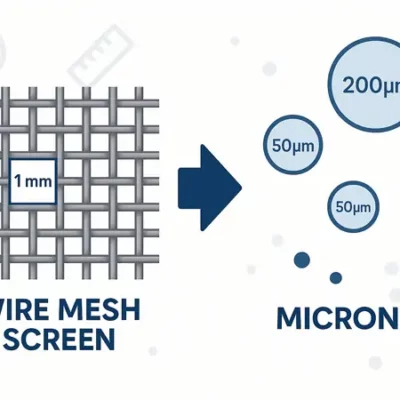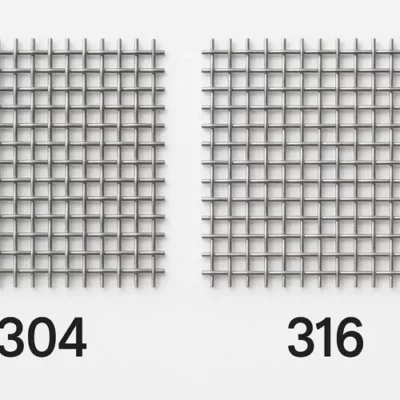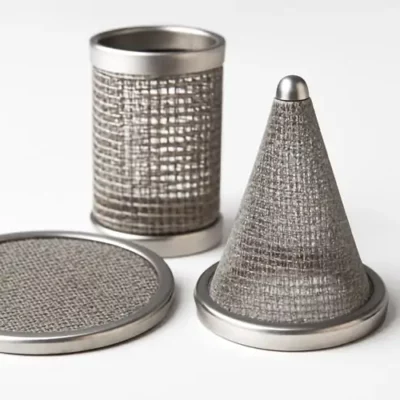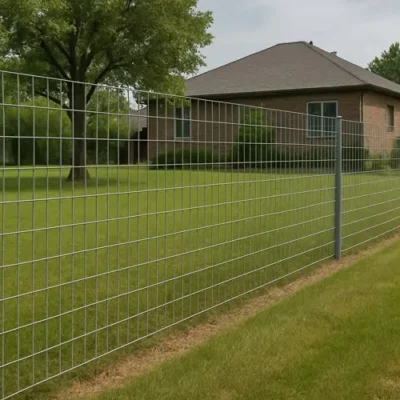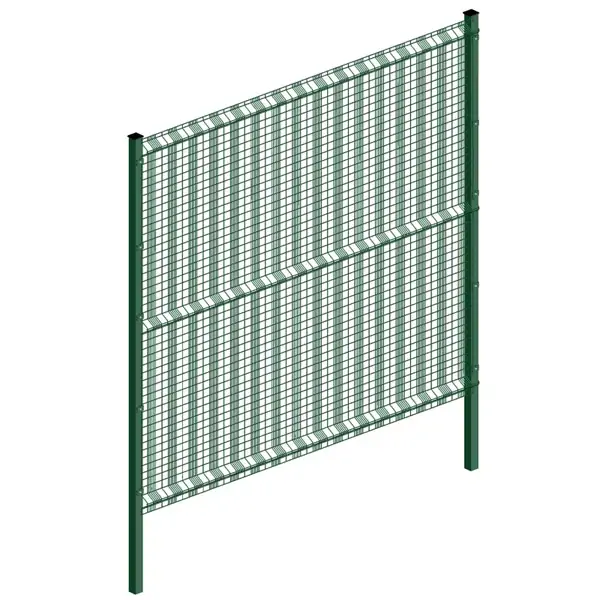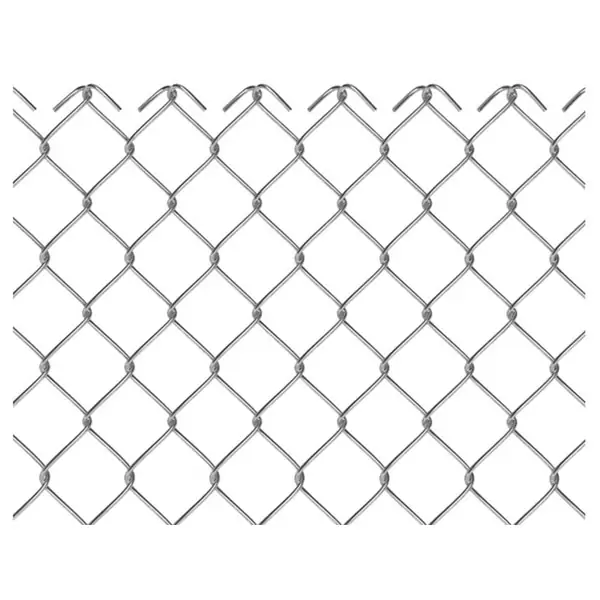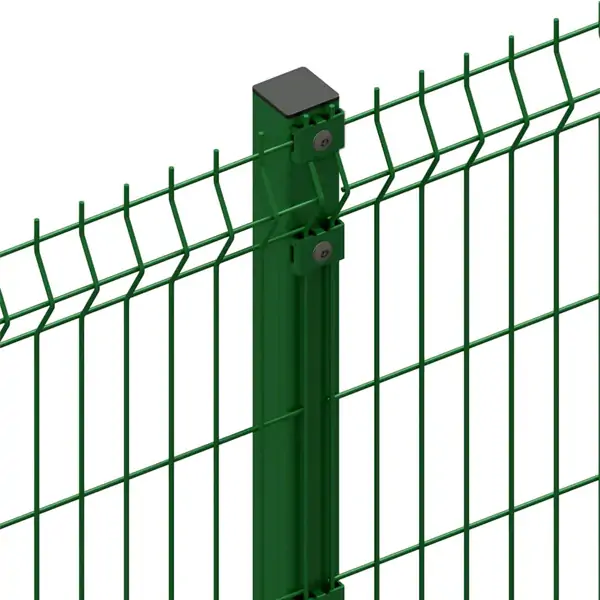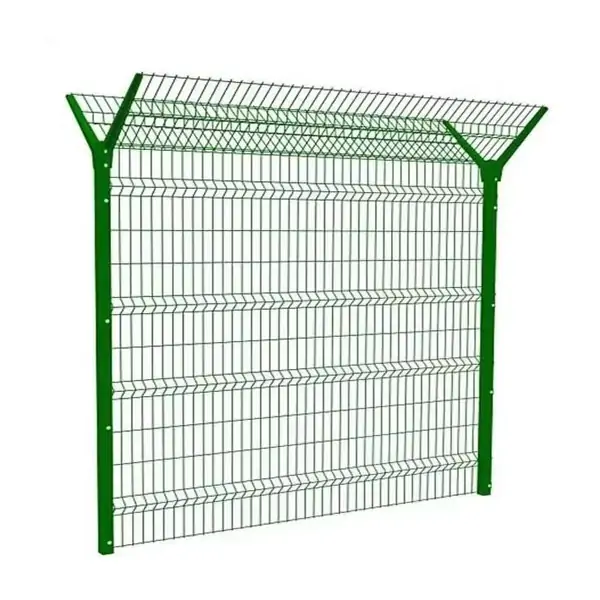Table of Contents
ToggleIntroduction
Gabion baskets have been around for centuries, but they’ve seen a significant resurgence in modern construction, landscaping, and erosion control. Made from wire mesh and filled with rock, recycled concrete, or other heavy materials, gabions offer both functional and aesthetic advantages.
Whether you’re building a retaining wall, preventing soil erosion, or enhancing your garden design, gabion baskets are often considered a go-to solution. However, like any building material, they come with their own set of pros and cons.
This ultimate guide will break down the key advantages and disadvantages of gabion baskets, helping you decide if they’re the right fit for your project.
What Are Gabion Baskets?
Gabion baskets are rectangular or cylindrical cages made of galvanized or PVC-coated steel wire mesh. These baskets are filled with stones, bricks, concrete debris, or other materials, and used in civil engineering, military fortification, erosion control, and even modern architecture.
Common Types of Gabion Baskets
-
Gabion Boxes – Rectangular and widely used in retaining walls.
-
Gabion Mattresses – Shallower and suitable for riverbeds.
-
Gabion Sacks or Cylinders – Ideal for underwater or temporary structures.
-
Welded Gabions – Rigid and clean-looking, used in decorative applications.
-
Woven Gabions – More flexible, great for uneven terrains.
Advantages of Gabion Baskets
1. Easy to Assemble
Gabion baskets are relatively simple to install. They don’t require specialized labor or heavy machinery in most cases. Many homeowners and DIY enthusiasts opt to install smaller gabion structures on their own with basic tools.
2. Create a Strong Structure
When filled and properly placed, gabion baskets form a strong, load-bearing structure. Their weight and interlocking nature make them excellent for retaining walls, embankments, and soil stabilization.
3. Allow Drainage
Unlike concrete walls, gabions are permeable. Water can freely pass through the gaps between stones, preventing hydrostatic pressure buildup that could lead to structural failure.
4. Unbeatable Durability
High-quality gabion baskets can last for decades, especially when made from galvanized or PVC-coated steel. They resist weathering, corrosion, and natural shifting of the earth.
5. Eco-Friendly Appeal
Gabions can be filled with recycled concrete, bricks, or local rocks, reducing environmental impact. They also allow vegetation to grow between the stones, blending the structure with the natural environment.
6. Design Flexibility
From retaining walls to benches, fences, planters, and art installations, gabion baskets offer unmatched design versatility. Architects often use them for both practical and aesthetic purposes.
7. Cost-Effective Choice
In large-scale applications, gabion systems are often more affordable than poured concrete or brick walls. The cost savings are further amplified when using locally sourced infill material.
8. Versatility
Gabions can be used in a wide range of applications—from flood control to decorative landscaping. Their modular nature means they can be customized to fit specific spaces and shapes.
9. Low Maintenance
Once installed, gabions require little to no maintenance. They naturally settle over time and are not prone to cracking like rigid concrete structures.
Disadvantages of Gabion Baskets
1. Not Attractive to Everyone
While gabions have a rustic, natural look, not everyone finds them visually appealing. In some architectural settings, they may appear too industrial or rugged.
2. Not Easily Replaceable
If part of a gabion structure becomes damaged, replacing a section can be difficult. It often requires removing and refilling the affected basket, which can be time-consuming.
3. Initial Cost
Although cost-effective in the long run, the initial installation cost—especially for large-scale or commercial gabion systems—can be high due to material and labor needs.
4. Limited Height
Gabion walls generally shouldn’t exceed certain heights without engineering reinforcement. For very tall retaining walls, other solutions may be more appropriate or safer.
5. Weed Growth
The gaps between rocks may allow weeds and other unwanted vegetation to grow, especially in outdoor landscaping projects. Regular upkeep may be required to maintain the desired look.
6. Weight Considerations
Gabions are heavy—both before and after installation. This can complicate transport and site placement. A solid foundation or base is often necessary to support the load.
Best Use Cases for Gabion Baskets
Gabion baskets are widely used in various environments:
-
Retaining Walls – Popular in landscaping and road construction
-
Riverbanks and Drainage Channels – To reduce erosion and channel water
-
Sound Barriers – Filled with stone or sand to absorb traffic noise
-
Fences and Privacy Screens – Modern architectural feature
-
Coastal Protection – Wave energy dissipation on shorelines
-
Decorative Features – Garden furniture, flower beds, fire pits
Expert Tips for Using Gabion Baskets
-
Use Angular Stones: These interlock better and reduce movement.
-
Select Galvanized or PVC-Coated Wire: Prevents corrosion and increases longevity.
-
Install Geotextile Behind Walls: Prevents soil from washing into baskets.
-
Consider Vegetation Integration: Use hardy plants to soften the look.
-
Level the Foundation: Especially critical for tall or stacked baskets.
Conclusion
Gabion baskets offer an impressive combination of strength, sustainability, and aesthetic potential. They are ideal for projects that require erosion control, stability, and long-term durability. However, they’re not without drawbacks—such as weight, visual limitations, and restricted wall height.
If you’re working on a project where function meets form, and sustainability is a priority, gabion baskets may be the perfect solution. Whether you’re a contractor or a creative homeowner, understanding these pros and cons helps you make informed decisions.
FAQs
How long do gabion baskets last?
When built with galvanized or PVC-coated wire, gabion baskets can last over 50 years depending on the environment.
Can I build a gabion basket wall myself?
Yes! Smaller installations are very DIY-friendly. You’ll need basic tools, a level base, and patience for filling.
Do gabions require foundations?
While small gabions may not, larger retaining walls do need compacted soil or gravel bases to ensure stability.
Are gabion baskets eco-friendly?
Yes. They can use recycled materials and support vegetation growth, making them a sustainable choice.
What kind of rock should I use?
Angular rocks (like basalt, granite, or broken concrete) are ideal because they lock together better than rounded river stones.

